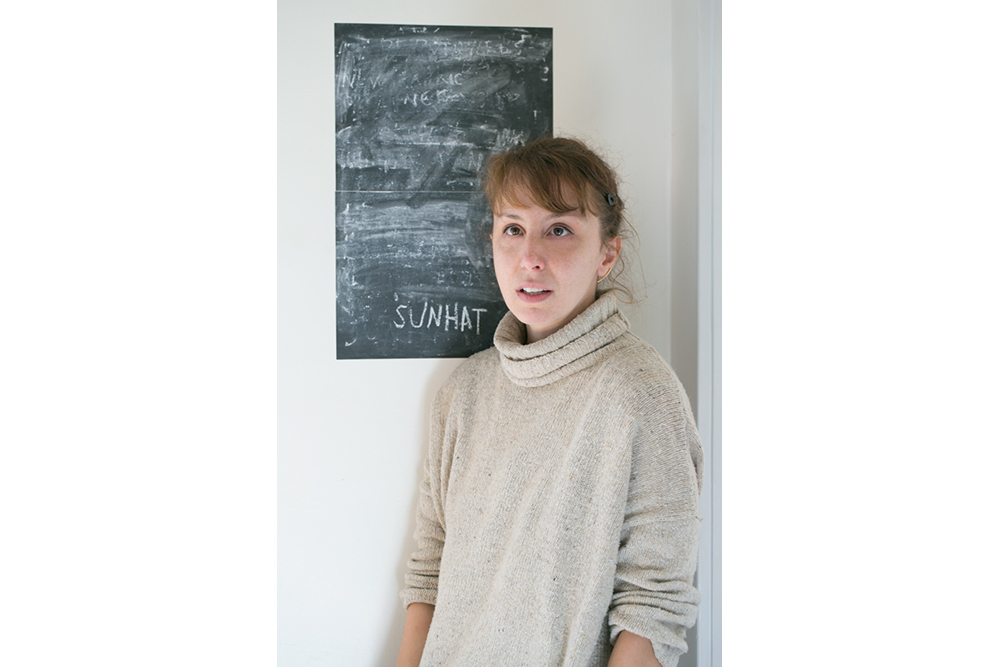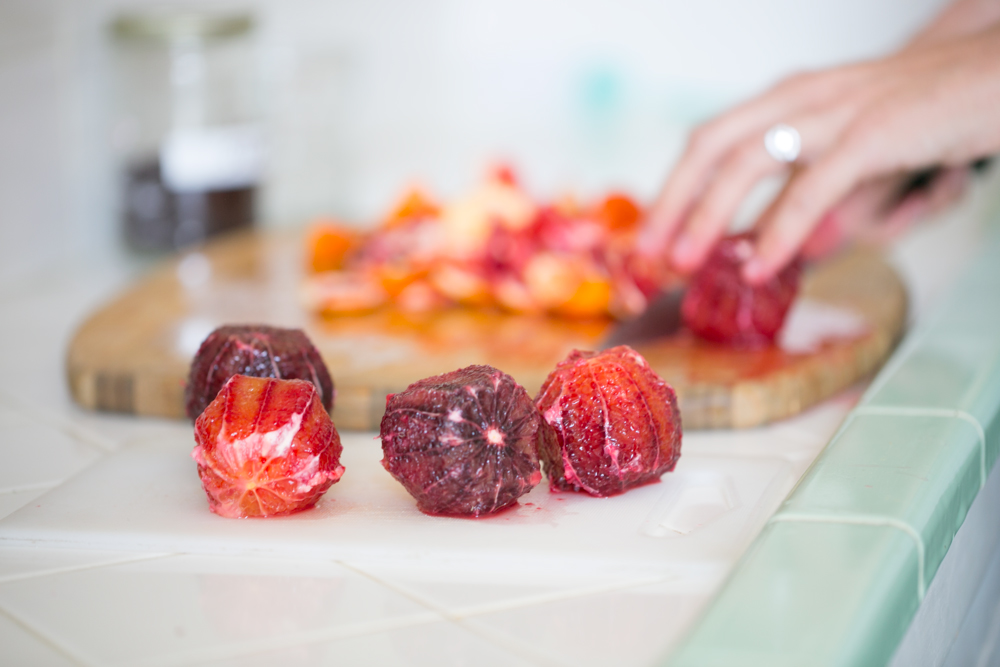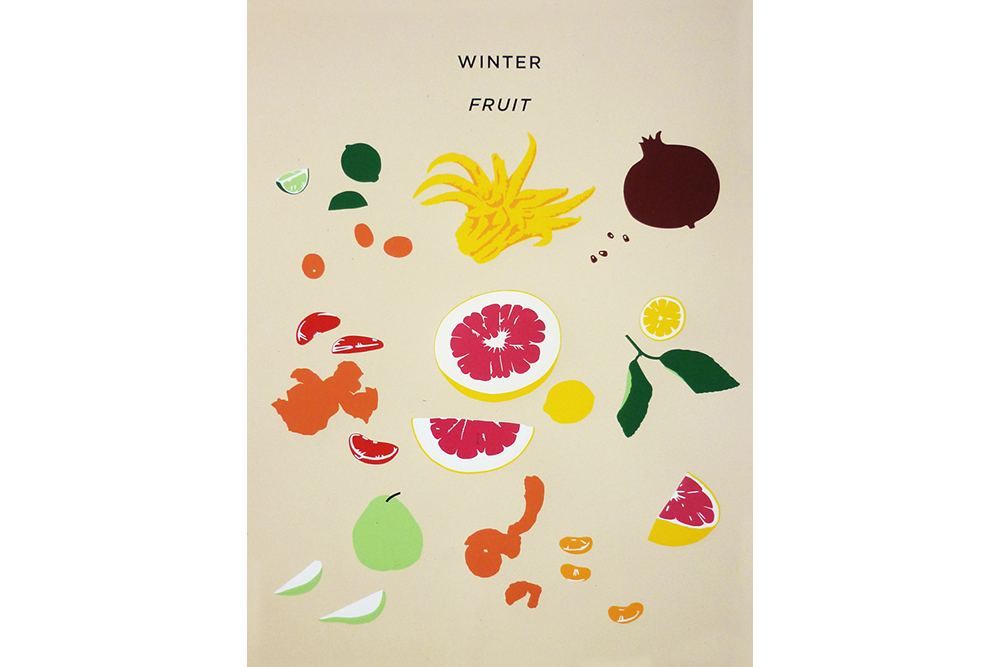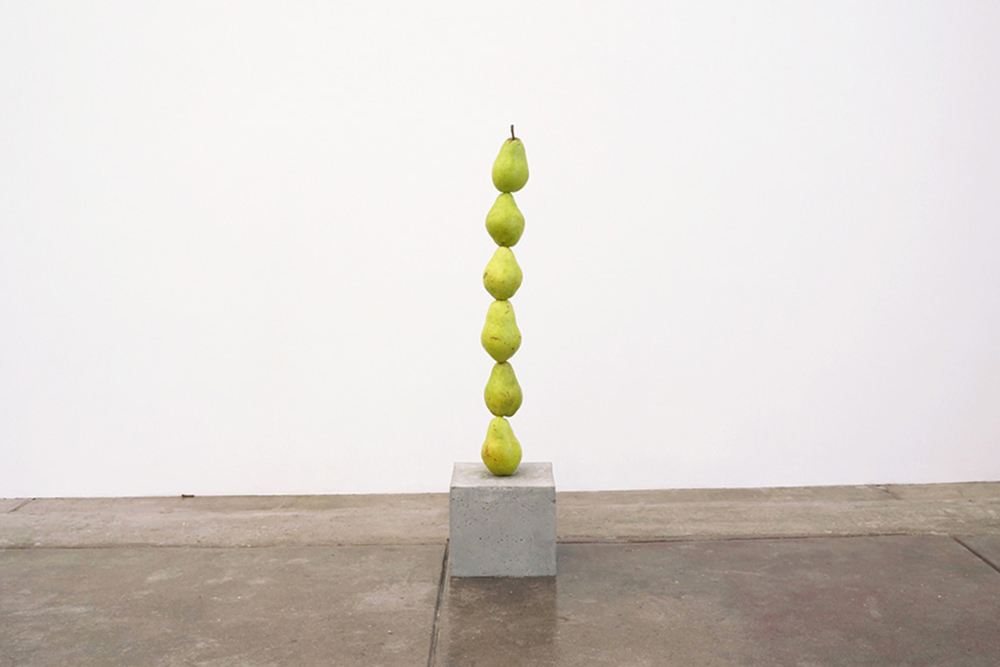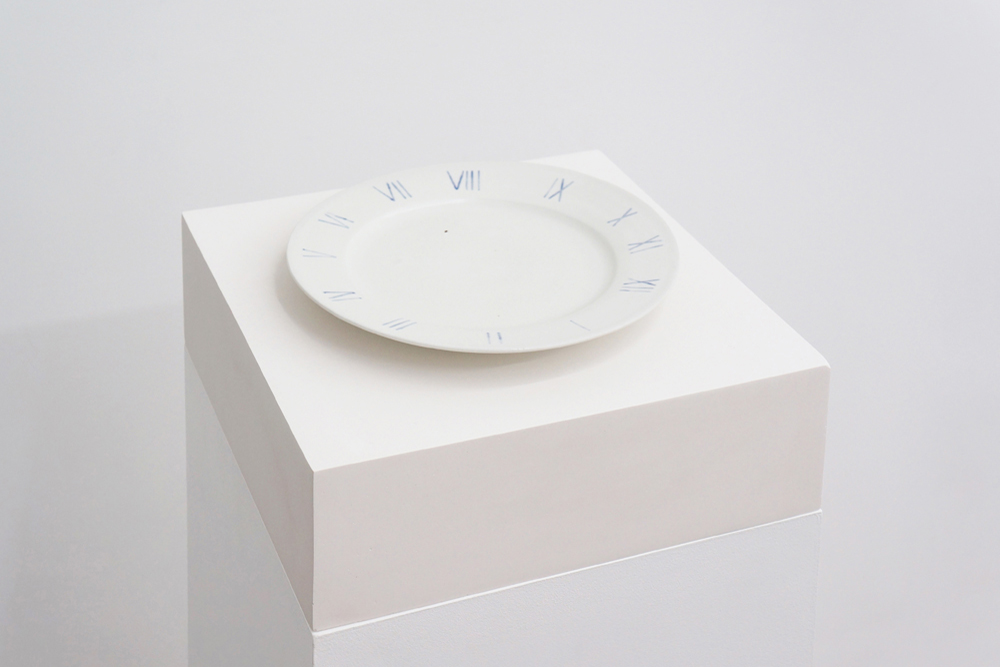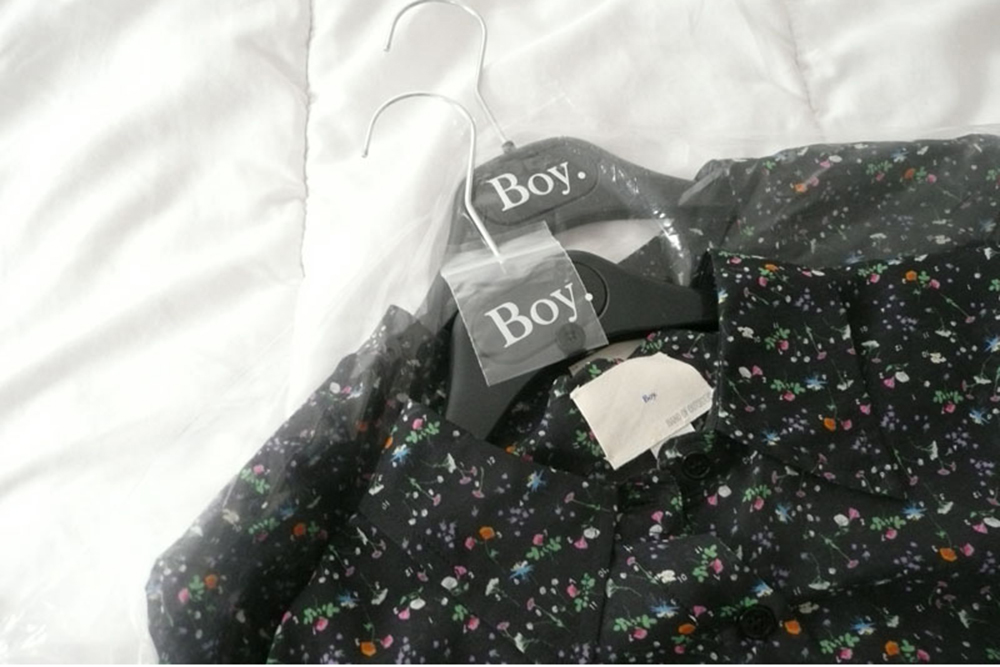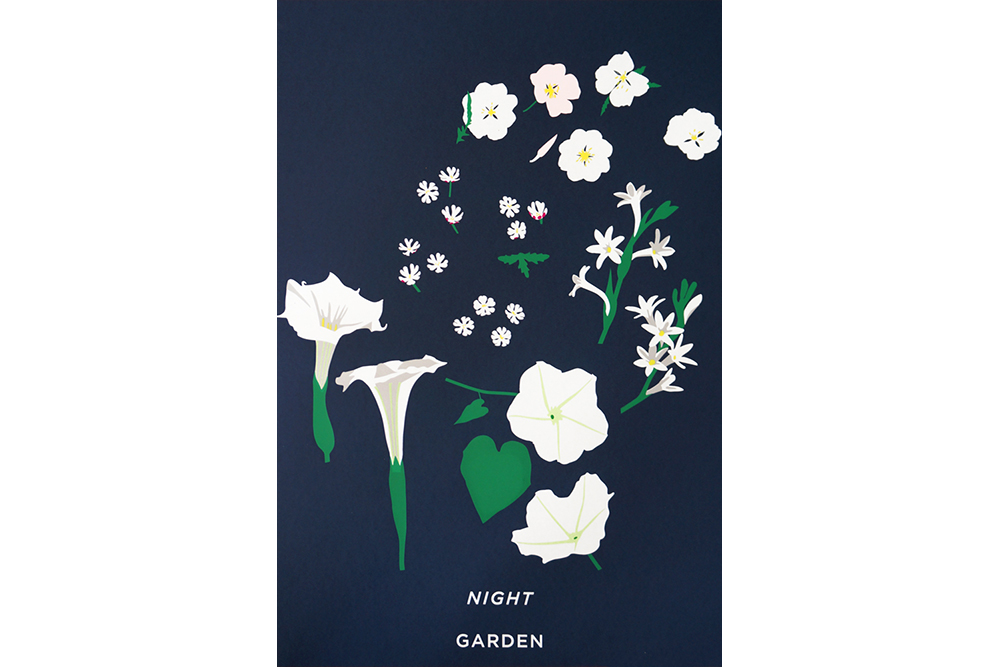Treviso, Blood Orange, Sumac and Pomegranate Molasses Dressing
Claire Nereim’s Treviso and Blood Orange Salad
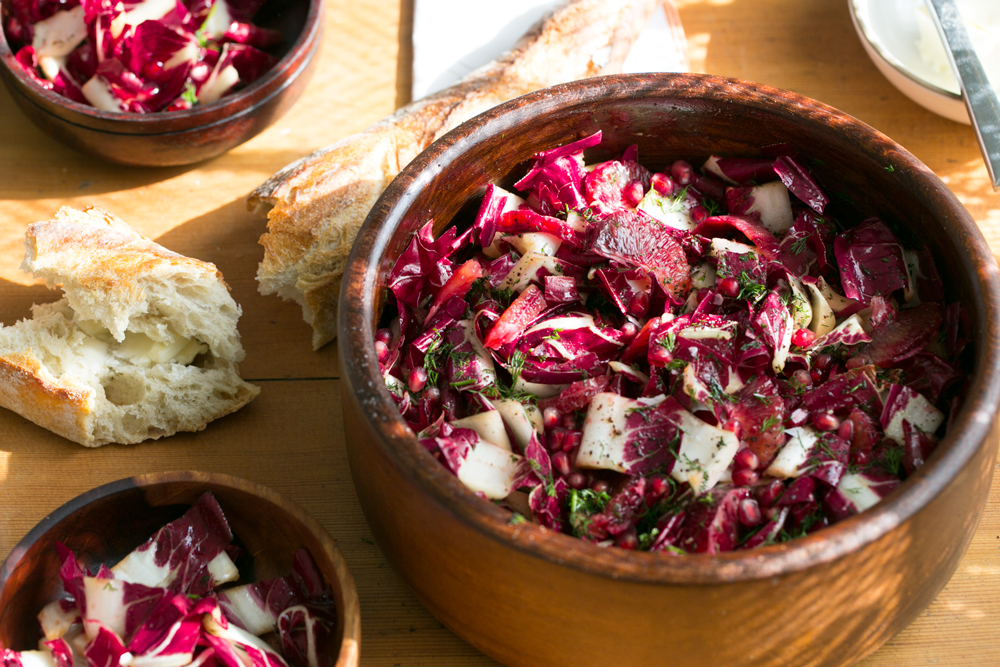
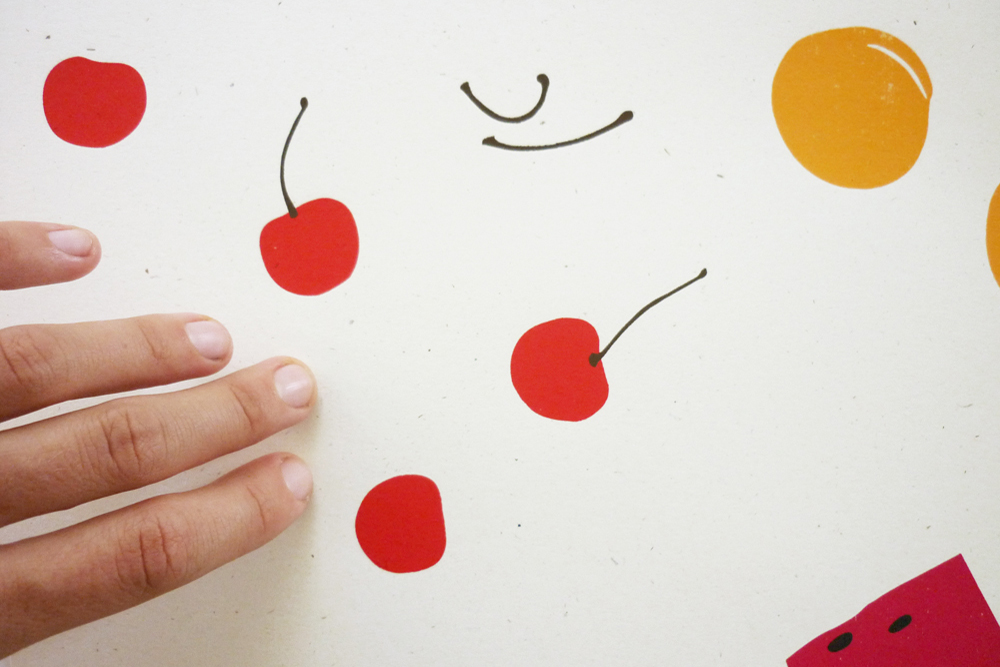
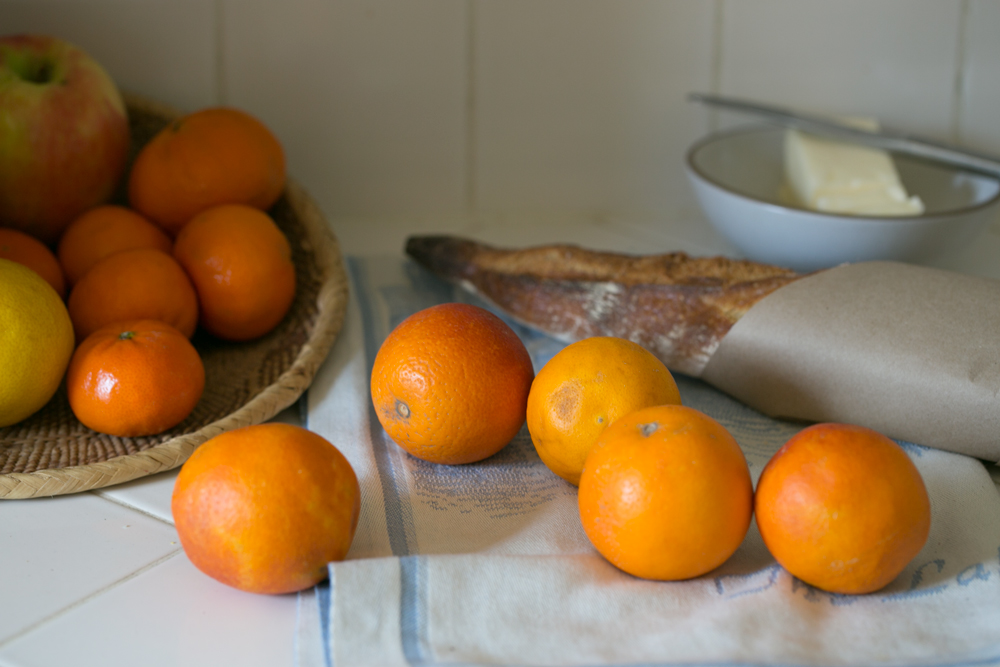
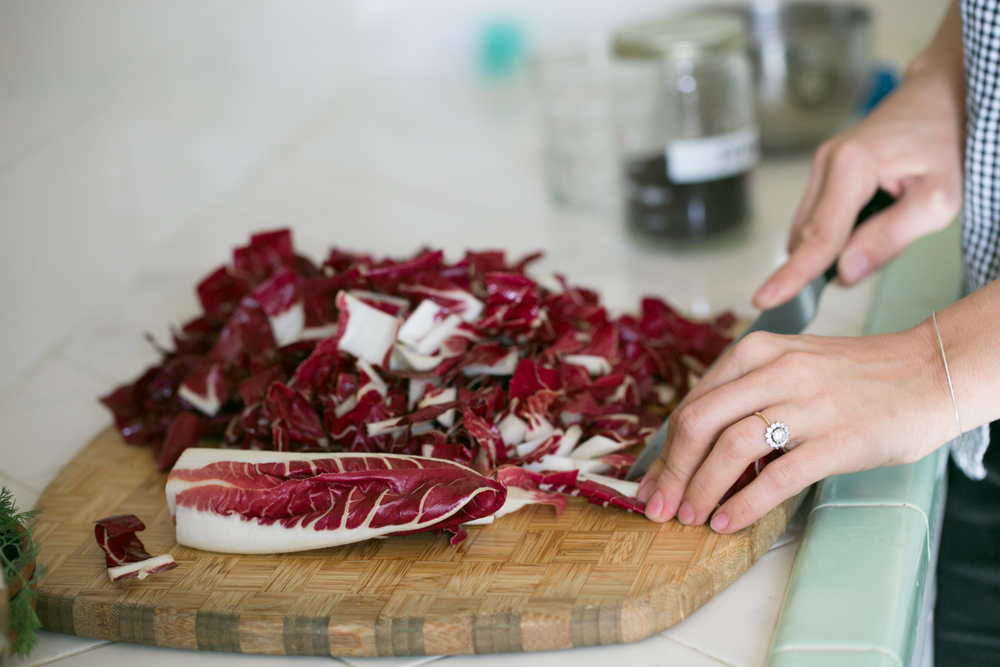

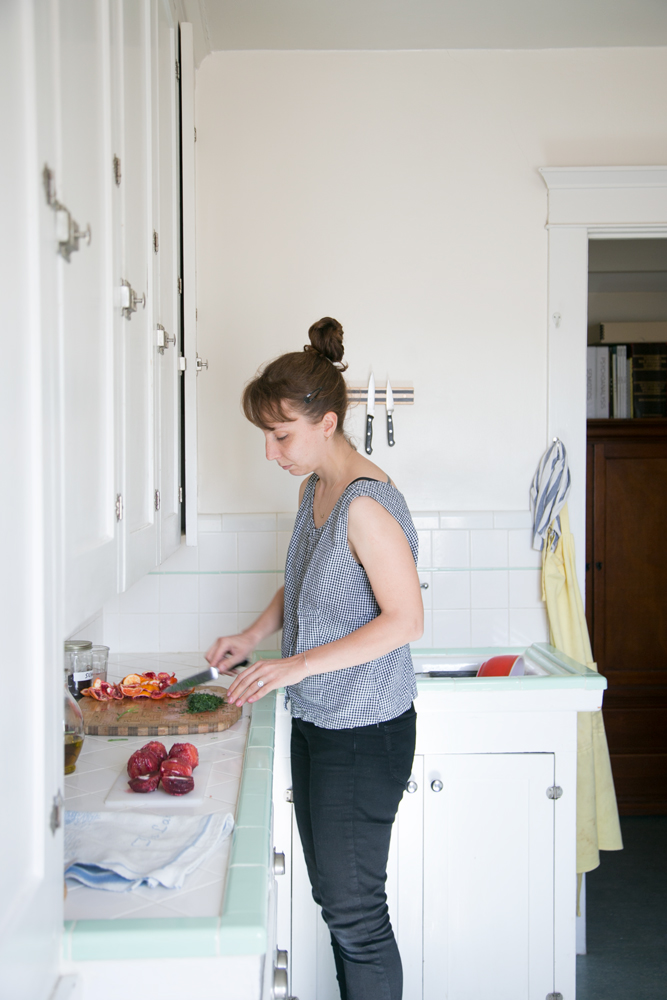
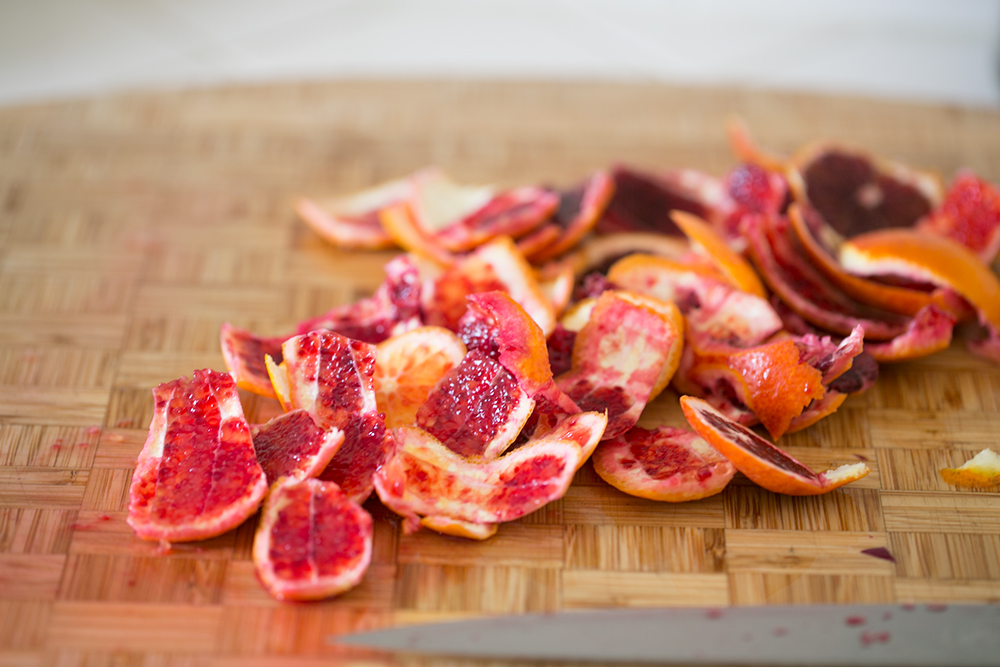
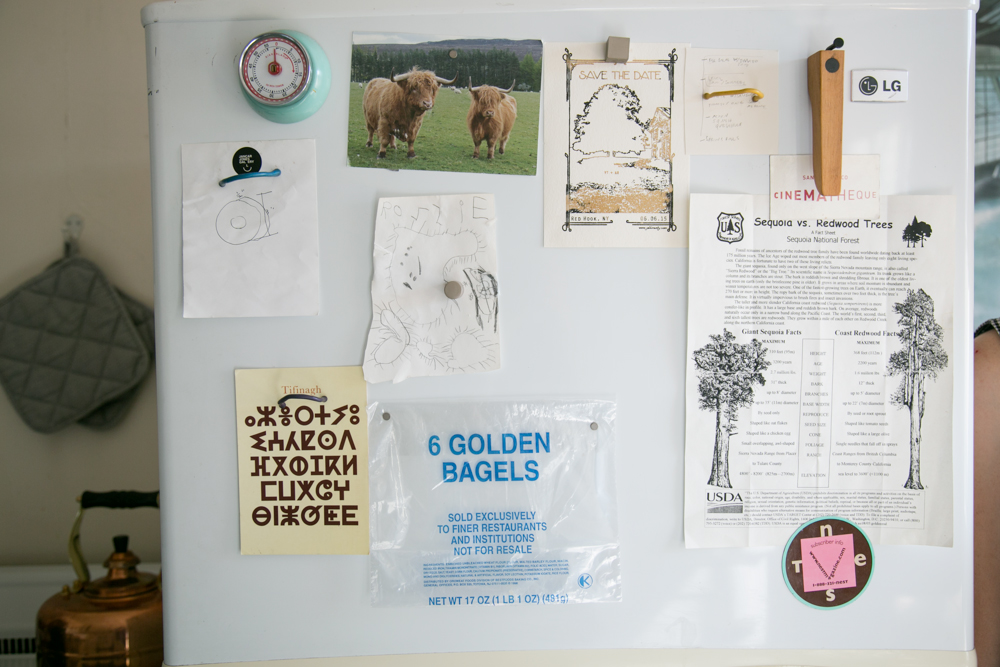
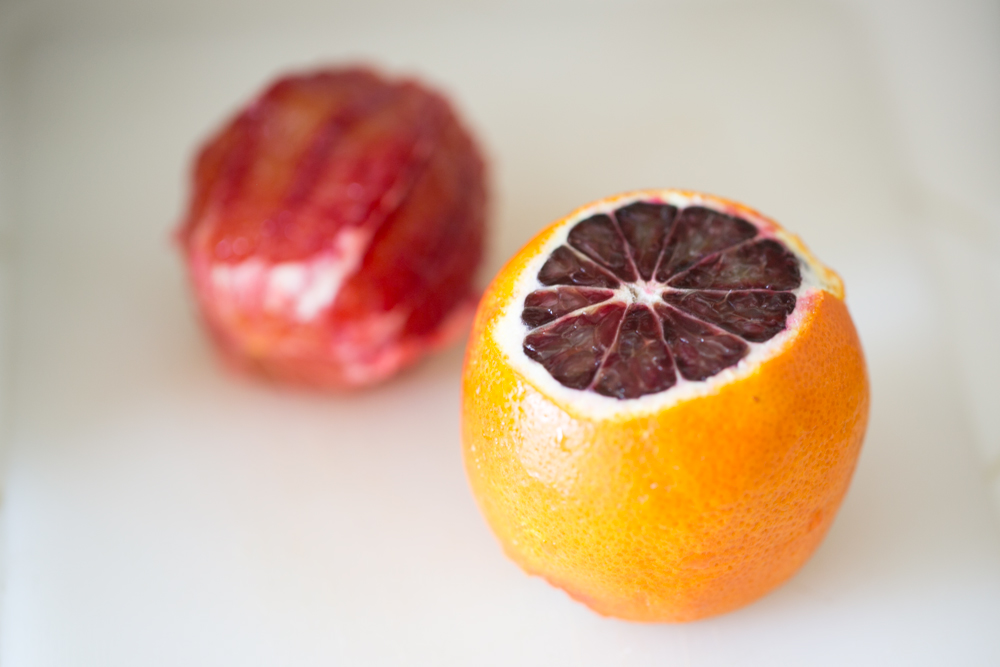
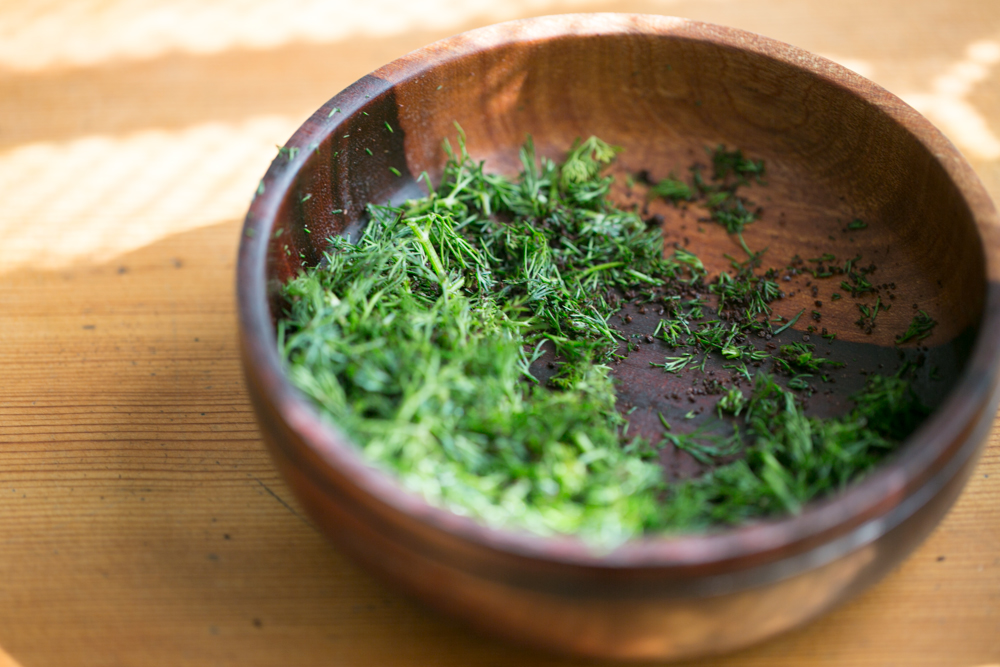
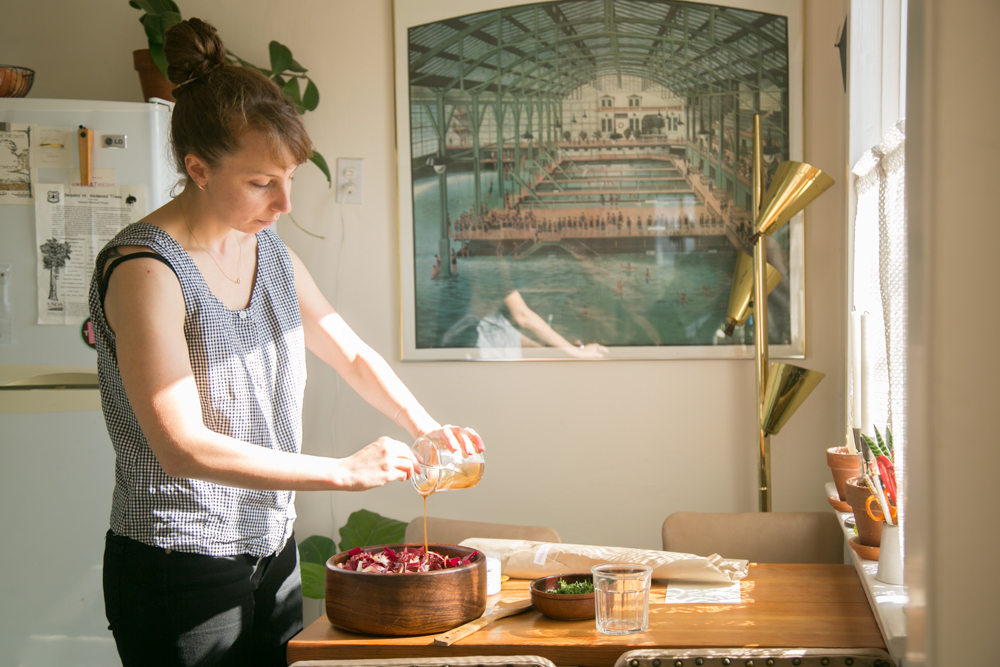
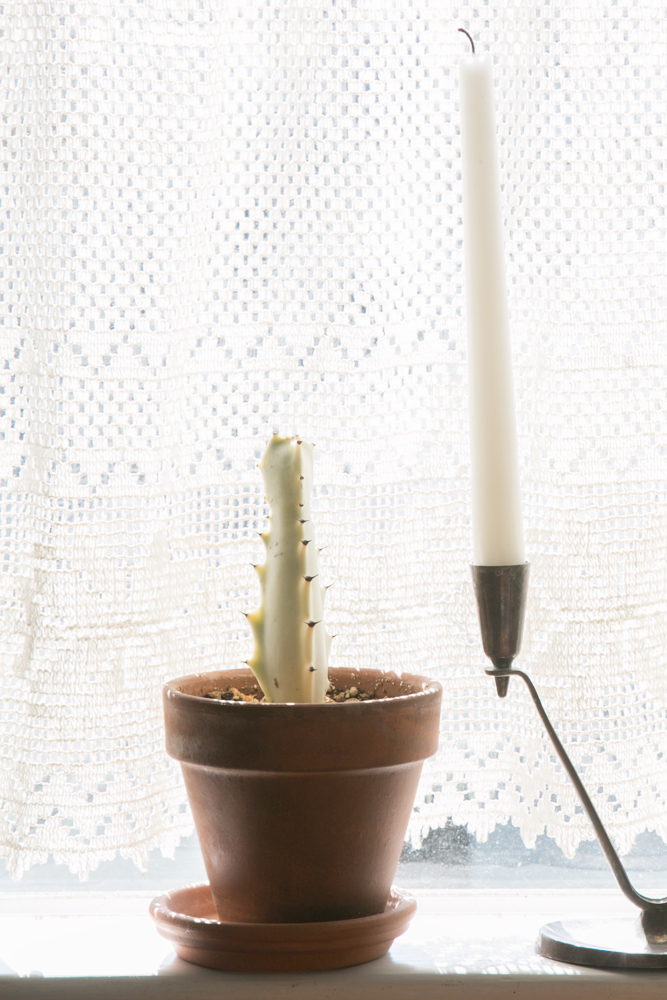
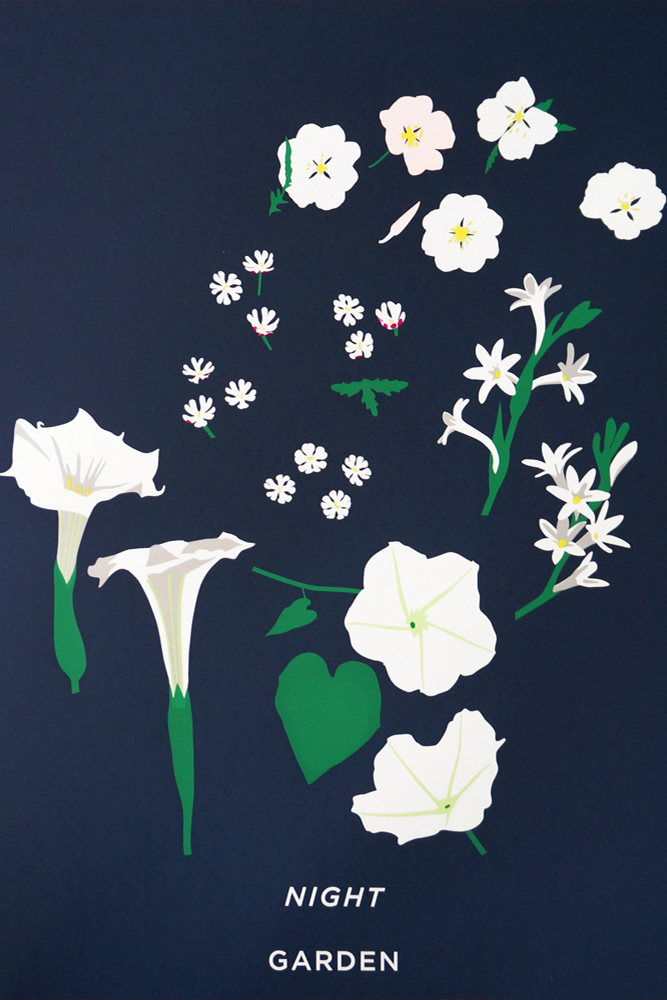
POSTED UNDER
- Citrus,
- los angeles,
- winter salad
INGREDIENTS
- blood oranges,
- dill,
- pomegranate,
- radicchio,
- sumac,
- treviso
NOTES
Pomegranate syrup is delightful. You use very little at a time, but it is great cooking down with honey and a little water, and poured on top of Greek Yogurt. Classic Iranian dishes use the stuff as a meat marinade. Try it with lamb.
RECIPE
DIFFICULTY
EASY
SERVES
4
PREP TIME
10 MINS
Salad
-
4 - 5blood organges
-
2headstreviso radicchio
-
handful of chipped dill
-
2tspsumac
-
pomegranate seeds
Dressing
-
1tbspred wine vinegard
-
2tbsppomegranate molasses
-
4tbsolive oil
-
sea salt
-
cracked pepper
POSTED UNDER
- Citrus,
- los angeles,
- winter salad
INGREDIENTS
- blood oranges,
- dill,
- pomegranate,
- radicchio,
- sumac,
- treviso
I first learned about Claire Nereim’s work through her printmaking project, Plant Planet. In her “Forever Calendars,” seasonal fruits and vegetables represent each month. There are graphic images of winter melons, night blooming flowers or seasonal vegetables of California. These prints function as calendars for sure, but they are special, perfectly simple works of art as well. Plant Planet is not her only creative outlet. Claire makes sculpture that often uses ephemeral plant based objects like seeds, fruit or organic matter alongside stoneware, metal chain, wood and paper.
Just in case you didn’t get it, Claire is a sculptor, whose day job is to make fine art prints. Fuck yeah Claire!
Claire Nereim In Her Own Words
JS: You have lived in California for a few years now, how has the landscape influenced your art?
CV: When I moved to California, I started to feel a greater connection to seasonal shifts through food. In 2006, I was living in San Francisco and decided to print a “forever” calendar, a booklet that hangs on the well, turns each month, and has only season fruit drawings for each month – no numbers. In college I designed and printed posters for bands and events, so these poster prints of seasonal botany were natural. Fruits and flowers and their categorization relate to language, the body, and to the passage of time in intriguing ways.
I made 25 for fun, intending to give them away as gifts. At the time, I was doing some design work for a local bookstore and they asked to stock some calendars and that’s how the project started.
JS: Have you always been interested in produce and seeds, or was that the influence of Southern California?
CV: My parents have beautiful fruit trees and my mom has always been a gardener and whole-ingredients cook, but I took that for granted until I moved to California in my early 20s. I was amazed by the quality and variety of produce available. The botany here is so different from where I grew up, and that feels like an exciting gift, something that’s rewarding to pay attention to wherever I go.
JS: How did your childhood influence your career in the arts?
CV: Growing up, my father was an inspiration: an architect, teacher and builder, he designed our house as a dynamic-project, meaning it is constantly remodeled and altered. I learned how to help with projects as a kid and got to work with my dad to design my childhood bedroom, which is an octagon! This sense of possibility and pleasure of making by hand was hugely influential in my life.
JS: You divide your printmaking project from your studio practice, is that separation important to you?
CV: My first sculptures were all books. I originally studied printmaking, but by the time I went to graduate school, I was really ready to move into sculptural works. I have always loved the second side of a sheet of paper and the temporal qualities of books.
Plant Planet is an auxiliary project of affordable multiples that can hang in people’s homes, a project that uses a particular skillset and part of my brain. This work is different from my studio practice.
My research and studio practice have certain overlaps with Plant Planet – I am hugely interested in Linnaeus’ flower clock design, in night gardens, interior architecture, the passage of time, and generative systems. But they do, for now, feel discrete to me.
JS: Do you imagine two different audiences for the two bodies of work?
CV: Not necessarily different audiences, but different modes of engagement. Plant Planet prints are more legible and are made to live in people’s rooms, in any kind of room, really. They are archival, they are numbered, and they are really happy to be prints.
Some of my sculptures include fruits and other dynamic materials, and some are inspired by my dreams. The whole practice is a space for me to ask questions about the nature of materials and their relationships to meaning-formation.
Julia: Tell me about the inspiration or origin of this salad.
Claire: For Christmas last year my sister gave my mom Persiana, a beautiful middle-eastern cookbook. My mom loves citrus and this salad immediately caught my family’s imagination.
JS: You mentioned that you studied in the Timara program. What is your relationship to music, and how does it factor in to your life now?
CV: I was in a band in San Francisco but haven’t played seriously since I began graduate school. I miss it. I do think that there are musical qualities that I consider in my work—repetition and variation, tempo and counterpoint. A few years ago I made an aural-sculptural clock, and I have some other kinetic-sonic sculptures in the works, but I am mostly a listener right now.
JS: You’re doing a collaboration with Band of Outsiders, have you done any other textile collaborations before? What was it like to see your work translated into very expensive clothing?
CV: I started a limited-edition t-shirt line called STYMIE in 2007 with my architect/artist friend Julie Cloutier, based on an alphabet and artists’ book we created together. It’s a fun challenge to relate pattern, print and design directly to the body. I’ve also made costumes for a movement-based video project and am, in general, a textile enthusiast.
I don’t know how to talk about the Boy by Band of Outsiders project, really! The garments are beautiful and I would love to do more textile collaborations. It was an interesting job and project, and kind of an outlier for me.
JS: Remind me, what made you buy that albino cactus?
CV: I made an exclusive Plant Planet print for General Store last winter, and decided to do a single-species poster. I have always loved the ghost cactus, and since I like to draw from life, I was allowed to buy myself one! It was not as easy to find as I had hoped, but I do see them around. They are skeletal and luminous!
